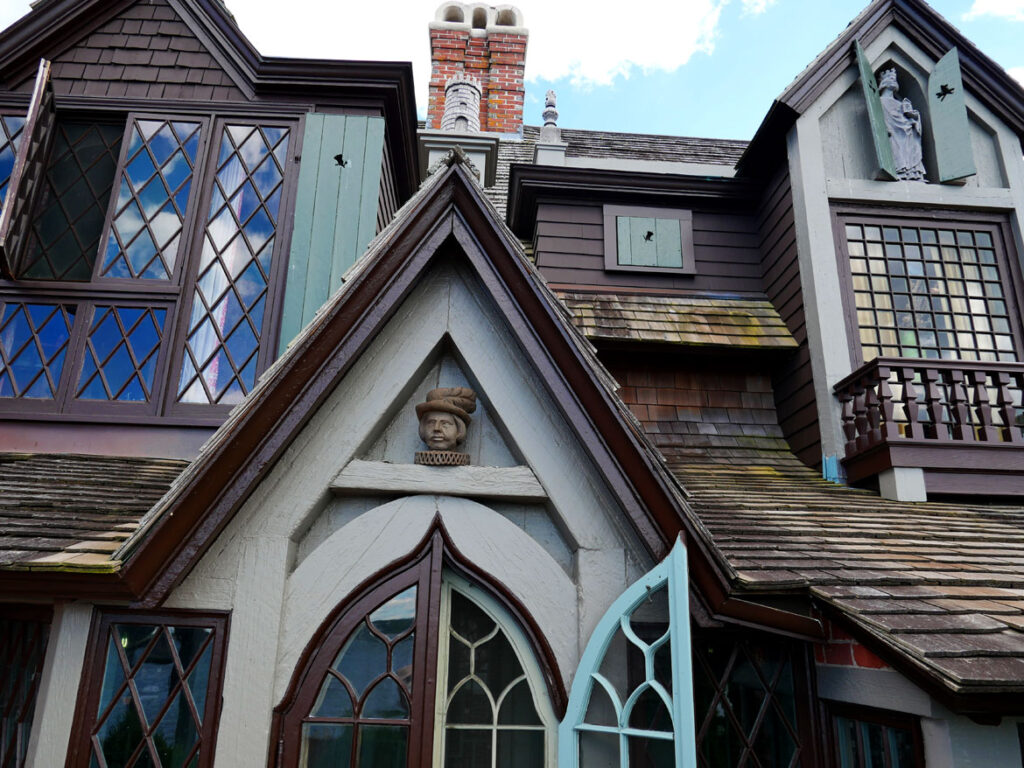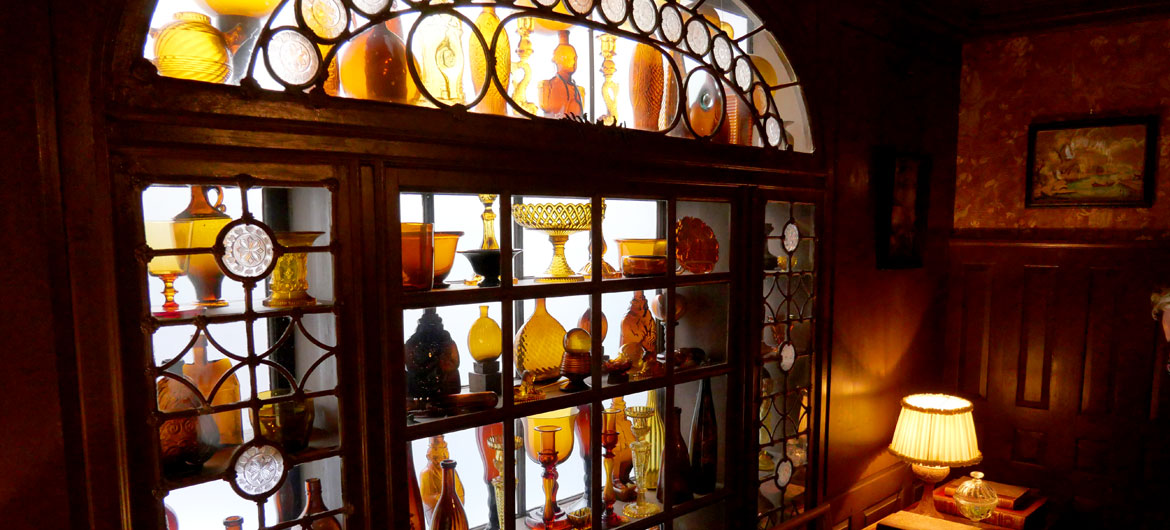“Mrs. Henry D. Sleeper of Beacon St. is building a beautiful summer cottage in Gloucester, near the site of the Colonial Arms hotel, which was burned during the late fall. The house is nearly completed and Mrs. Sleeper and her son, Mr. Henry Sleeper, expect to occupy it in the early spring,” The Boston’s Globe society column “Table Gossip” reported on March 1, 1908.
The house, designed by the widow’s bachelor son Henry Sleeper, “has just been completed,” the Globe reported in May 17, 1908. “This is a most attractive place.”
Sleeper first called the 26-room cottage “Little Beauport” after French explorer Samuel de Champlain’s description of Gloucester’s harbor when he sailed in during 1606: “Le Beau Port,” the beautiful port.
Then Sleeper kept adding rooms with his collaborator, architect-carpenter Halfdan M. Hanson. By the time Sleeper died in 1934, Beauport was a maze of 56 rooms, each with its own theme, plus seven separate stairways and secret passages and doors that sometimes just hid mirrors. The variety along the roofs—round tower, turret, copula, dovecote, six chimneys, weathervanes, porches and bays—can give the impression of a village. A “spite wall” constructed by a neighbor on the northern end is said to have been built to keep Sleeper from expanding more in that direction.
Beauport became a showplace for Sleeper, launching his career as one of America’s first interior designers, for East Coast swells and Hollywood stars. The house is a model of architectural salvage, a pioneering example of Americana, an architectural fantasy of England and China and the colonial United States. Now long operated by Historic New England, the Sleeper-McCann house at 75 Eastern Point Boulevard was named a National Historic Landmark in 2003.
“Probably the country’s best known interior decorator in the field of the early American interior,” the Boston Evening Transcript said when Sleeper died. “Long an expert in furniture of England and this country, his special interests were centered in later years on the pine furniture of the Pilgrim century, and his private collection of these pieces was said to be unexcelled by any similar group. … His death has removed a figure who had become almost legendary.”
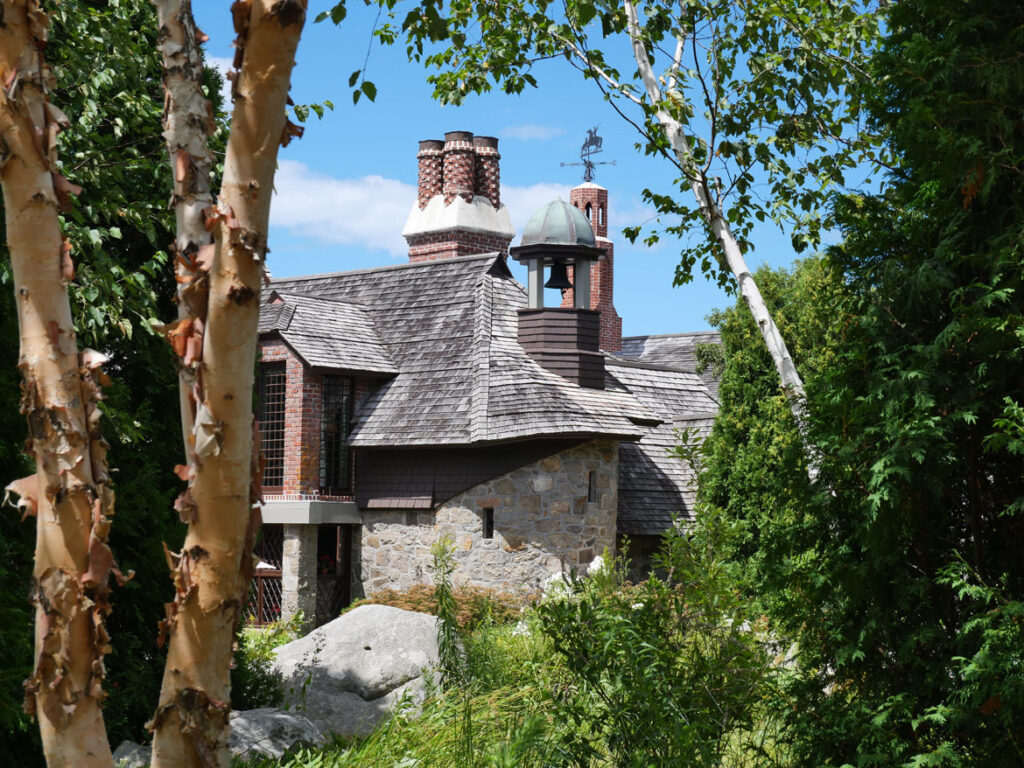
Eastern Point
“J. Henry Sleepr and [his son] Henry D. Sleeper, well-known Bostonians, have been registered here during the week,” staying in Gloucester’s Magnolia neighborhood, The Globe reported in its “About Cape Ann” column of July 28, 1901. Henry Sleeper first made his way to Gloucester’s Eastern Point in April 1906, invited to Harvard economist Abram Piatt Andrew’s home Red Roof. They became lifelong friends—and the two gay men might have been more than that.
Andrew served as President William Howard Taft’s director of the Mint, then an assistant secretary of the Treasury. He founded the World War I American Field Service ambulance corps in France, before the United States entered the fighting. Sleeper “performed the lion’s share of the money-raising job during World War I” for the aid project, including organizing a September 1916 benefit screening of French army films in Manchester, Massachusetts, that raised $1,000, the Globe reported at the time. Their service earned the two friends France’s Croix de Guerre and Legion of Honor. After the war, Andrew was elected to the U.S. Congress, serving in Washington for 15 years.
In Gloucester, their circle included their Eastern Point neighbor, portrait painter Cecelia Beaux, and inventor John Hays Hammond Jr., who built a castle across the harbor in West Gloucester. Isabella Stewart Gardner was a frequent visitor.

Sleeper, who was born in Boston on March 27, 1878. came from money. His grandfather, Jacob Sleeper, was a trustee of Wesleyan University, one of the founders of Boston University (Jacob Sleeper Hall was named for him), and made a fortune from a textile factory in Lowell and real estate. His father J. Henry Sleeper commanded an artillery battery during the Civil War. His brother Jacob Sleeper was a diplomat to Columbia, Venezuela, Cuba and Switzerland. His other brother, Stephen, continued the family’s real estate enterprises.
In 1907, Sleeper bought rocky ledge at the edge of Gloucester harbor, two doors down from Andrew, from the owner of the abutting hotel—the hotel that would burn that New Year’s. With help from Gloucester architect-carpenter Halfdan M. Hanson, who became his longtime collaborator, construction of Beauport began that fall. (Hanson’s most prominent commission is Gloucester’s Our Lady of Good Voyage Church of 1914-1915.) The house served a replacement for the family’s shingle-style house that his father had Boston architect Arthur Little design for them in Marblehead, which the family had sold in 1902.
The initial building suggests an English shingle style Queen Ann summer cottage, with bedrooms inside in tribute to British Admiral Horatio Nelson and poet Lord Byron. The ceiling of the Byron Room was adjusted to accommodate the dolphin finials of a bed, which Sleeper believed came from Byron’s house (more recent analysis suggests it came from the United States). He financed the work with the beginning of a series of mortgages.
Today, Beauport is surrounded by a garden, with terraces that lead down to a cliff at the churning sea edge. Guests enter via the Cogswell Room, paneled with wood taken William Cogswell’s 1730 Georgian home that Sleeper, Andrew and Gardner found ready for demolition in Essex during one of their drives in September 1907.
“Before the building of this house much of the old wainscotting of old New England houses was being burned for firewood or thrown away, especially in the case of minor, low-studded rooms,” Country Life magazine wrote in 1929. “The adroitness of use and intimate character of these rooms have inspired many a visitor to search and save likewise.”
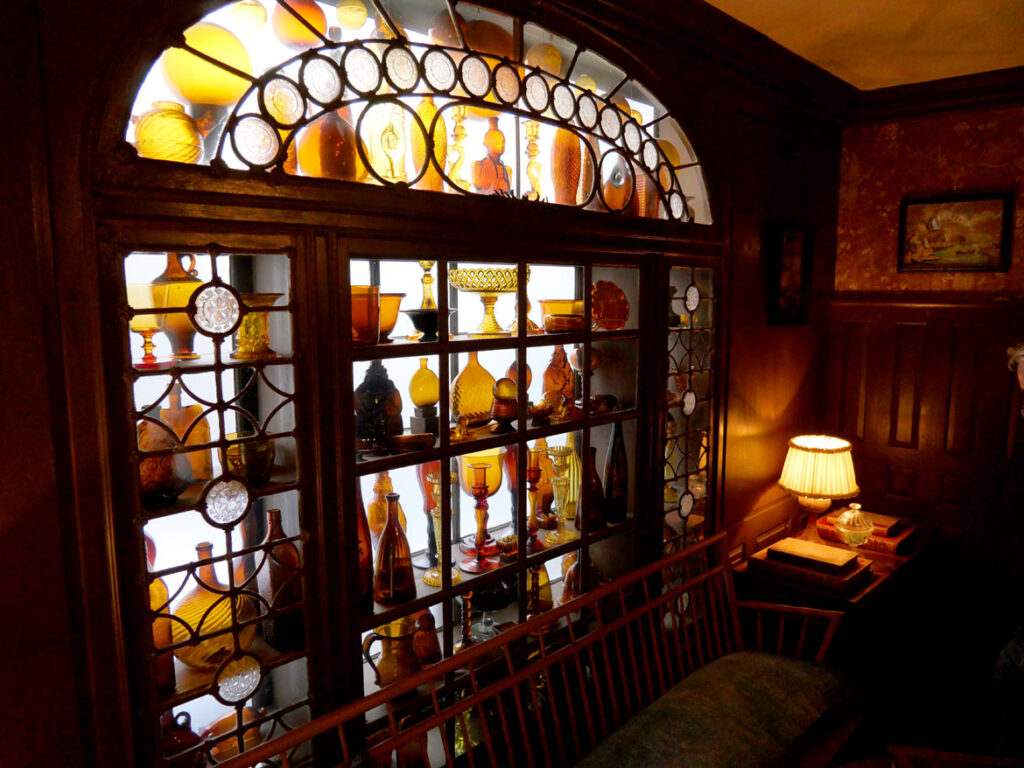
Sleeper began making changes and additions in 1909 by adding exterior shutters, then the southeast wing in 1911, including the Book Tower, Shelley Room and Pineapple Room. In 1911, he purchased 18 feet of land on the north side, a slice of where the hotel had been sited, and began expanding that way. He added the east-central wing in 1912.
Sleeper’s design suggested vintage materials and historical accuracy, but he was actually loose with the details, favoring dazzling pastiches to facts—much the way his friend Isabella Stewart Gardner built her Back Bay mansion in Boston as a fantasy of a renaissance Italian palace. (Sleeper served as a trustee of Gardner’s museum after she died. He also served as a trustee of the Museum of Fine Arts and a director for the Society for the Preservation of New England Antiques, which is now Historic New England.)
Sleeper increasingly shifted Beauport from an English manor style to Americana after visiting Monticello, Mount Vernon and Williamsburg, Virginia, in 1911 to ’12. He replaced Beauport’s stucco with stone and brick, and furnished it with early New England touches—and as many as 19 representations of George Washington. Including a cast-iron stove in the Stair Hall or Central Hall that is topped with a metal George Washington who faces a salvaged Connecticut Valley doorway, fitted with shelves and backed with frosted glass (backlit by an interior skylight intensified by a mirror in the pantry beyond) for a showstopping display of 130 brown and amber glass jugs and bowls and candlesticks.
Sleeper found the color for Beauport’s Green Dining Room by scraping down the woodwork to detect the earliest paint and learn his own palette of “colonial colors.”
He was part of the Colonial Revival movement, a quest during the budding Modernist era to turn away from European influences in search of authentic American styles, especially as the 150th anniversary of the founding of the United States approached in 1926.
In the 1951 book “Beauport at Gloucester,” Sleeper’s friend Paul Hollister remembered him saying, “Mightn’t it be fun to have a house in which each room could recapture some of the spirit of a specific mood or phase or period of our American life from the time of Plymouth down through the Revolution and the early Republic?”
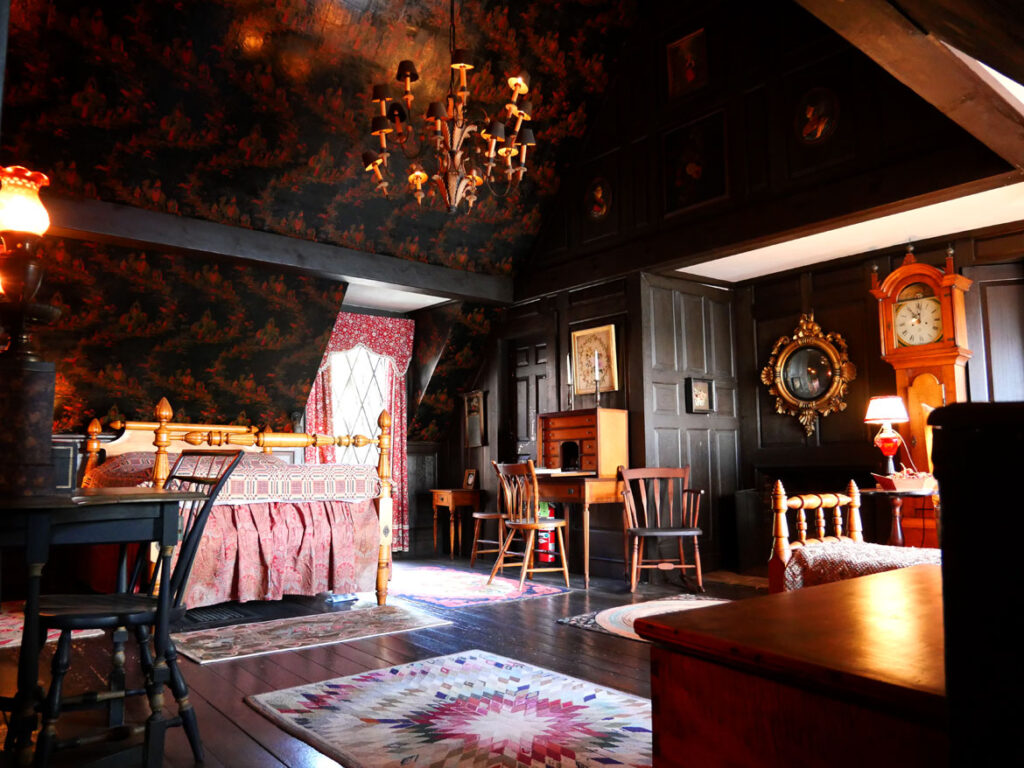
A Noted Collection
“Signor de Martino is the Italian Ambassador to the United States and, with his family and staff, is occupying the Henry Sleeper house at Eastern Point, Gloucester,” the Globe reported on Sept. 2, 1928. Visitors who signed Beauport’s guestbook included author Henry James; artists John Singer Sargent, Childe Hassam and Paul Manship; and tycoons John D. Rockefeller Jr. and Henry F. Du Pont. “Seeing Harry Sleeper’s house at Gloucester … crystallized my desire to start collecting Americana on my own,” Du Pont later recalled.
Sleeper furnished Beauport’s rooms with period furniture, modern recreations, glass, prints, books, tole, hooked rugs, scrimshaw, nautical instruments, an 1835 whaler’s journal, Chinese export porcelain, silhouettes, toys, a dramatic doorway salvaged from Newport, Rhode Island, house and other architectural recycling.
The Pembroke Room or Pine Kitchen composed in 1917—the year his mother died—is a reimagining of the classic colonial New England fireplace hearth, with pine paneling taken from his mother’s ancestor Robert Barker’s 1650 home in Pembroke, Massachusetts, and floorboards from the Dillaway house in Boston’s North End, which was torn down in 1917. Redware is showcased in two cabinets. Sleeper’s collections often become still-lifes and vignettes. He mixes vintage colonial furniture with contemporary immitations that he commissioned from Gloucester cabinetmaker Frederick Poole.
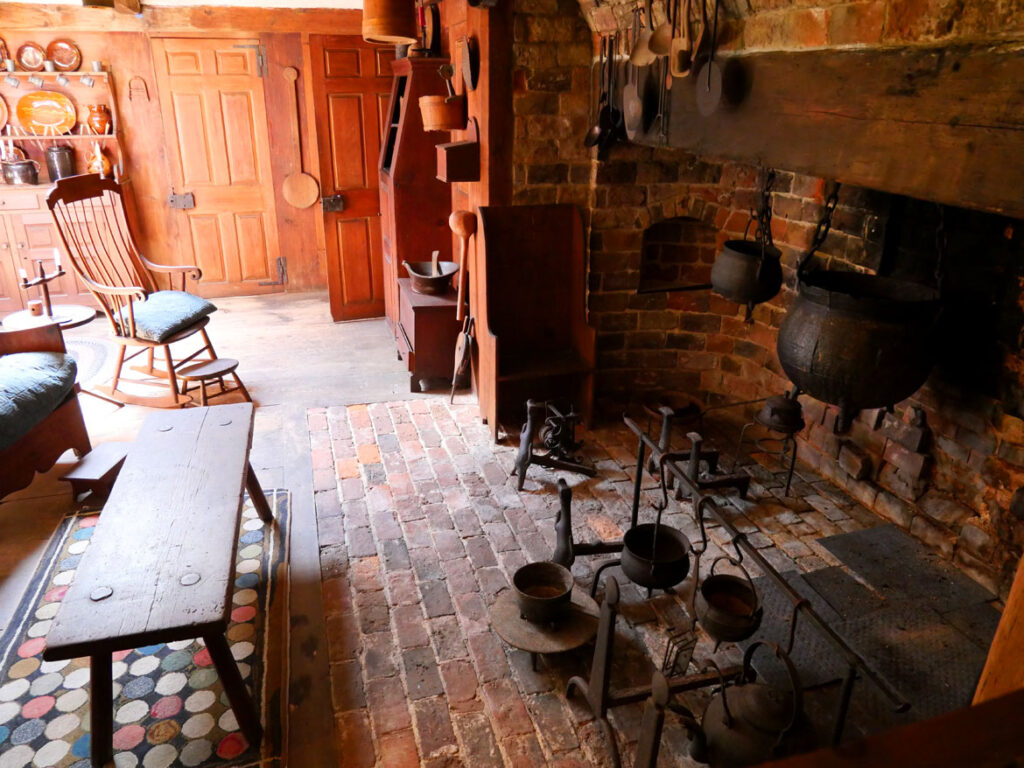
The rooms are mostly connected room-to-room, rather than by hallways. The labyrinthine organization can make exploring the house feel like a dream, with surprises through each door and around each corner. The drama is heightened by Sleeper’s expertise with lighting—from glowing backlightings to dark rooms that open onto the bright of windows viewing rooftops or the glittering harbor.
An indication of Sleeper’s renown is a 1930 advertisement in the Saturday Evening Post, which proclaimed: “Chase and Sanborn’s Dated Coffee served in homes of each of these surprisingly domestic well known bachelors”—Hollywood star Gary Cooper, New Yorker journalist Alexander Woollcott, adventurer Richard Halliburton, and Sleeper. That June, Sleeper was one of the contributors who helped cover the $500 fine of James A. Delacey of Cambridge’s Dunster House Bookshop for selling “Lady Chatterley’s Lover” by D.H. Lawrence to a member of the censorious Watch and Ward Society. In August, Boston’s Museum of Fine Arts debuted a room dedicated to Paul Revere in its new wing—including 23 pieces of Revere-designed silver that were donated by Sleeper, and formerly occupied a cabinet in Beauport’s Paul Revere Room.
In May 1934, the American Institute of Architects named Sleeper an “honorary member,” because “Sleeper, who in his noted collection of early American furniture and decoration has accumulated an invaluable record of the art and culture of the early republic, has preserved from loss and destruction numerous priceless examples of the work of the first American artists and craftsmen, and has provided an enduring basis for future study and research in the field.”
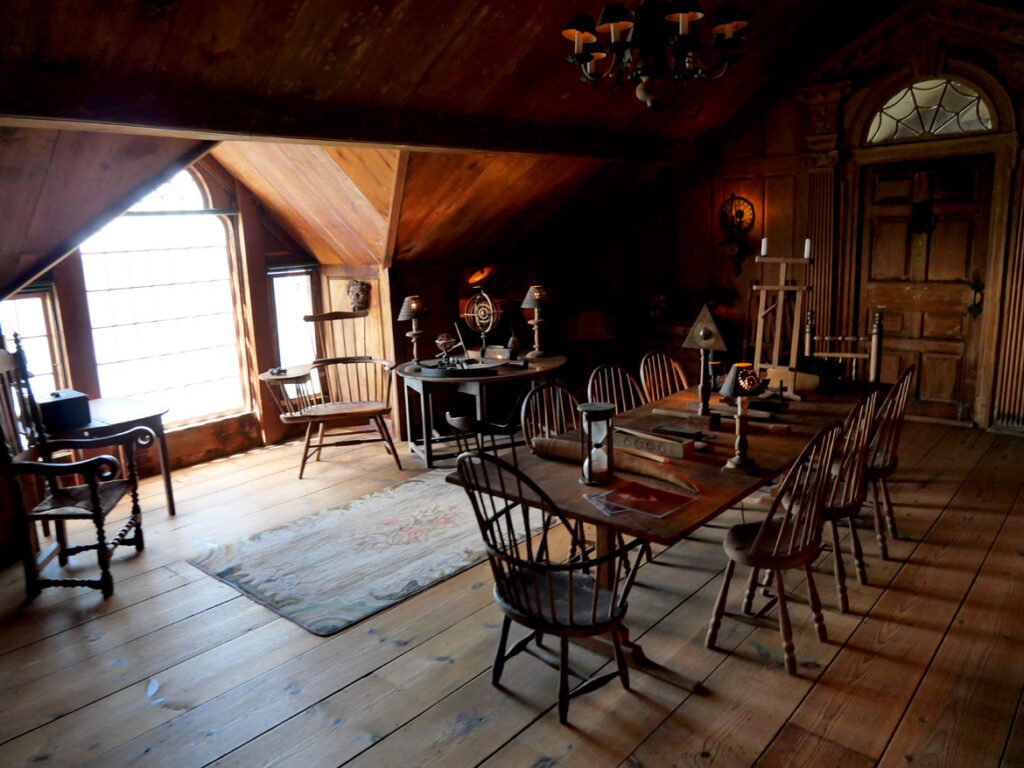
Sleeper fell ill and landed in the hospital while working in California that July. He made it back to Boston, but died from leukemia on Sept. 22, and was buried at Cambridge’s Mount Auburn Cemetery.
His entire estate was left to his brother Stephen. Including Beauport and its furnishings, a townhouse Sleeper owned at 90 and 90A Chestnut St. in Boston, plus stocks and bonds, its value totaled $147,045, according to a November 1935 Globe article. But quietly the estate was deep in debt, prompting Stephen to sell it to Charles and Helena McCann. (Helena was an heir to the Woolworth fortune.) The couple purchased the house and grounds intact. They kept the place as a summer home and made few changes. In 1942, after the McCanns had both died, their three children donated the property to Historic New England.
The McCanns did make one significant change. In 1923, Sleeper transformed his original 1908 vaulted medieval hall into the China Trade Room. It had a small pagoda built into one wall and was decorated with hand-painted Chinese wallpaper that serve as murals depicting the farming of rice and manufacture of porcelain. The wallpaper came from Robert Morris of Philadelphia, a signer of the Declaration of Independence, who had imported it in 1780s but never got around to using it. The McCanns brought in sofas, replaced the brick floor with wood covered by carpet, and hung a Waterford crystal chandelier. They kept the wallpaper, but got rid of the pagoda.
If this is the kind of coverage of arts, cultures and activisms you appreciate, please support Wonderland by contributing to Wonderland on Patreon. And sign up for our free, occasional newsletter so that you don’t miss any of our reporting. (All content ©Greg Cook 2022 or the respective creators.)
